Beyond winning the ‘genetic lottery’, what can you do to increase your chances of living to 100? Jack Southan spends time in a Blue Zone to find out how food, community, nature and purpose all contribute to a long and happy life.
Looking up at the tip of the fishing rod I see the first subtle signs that something might have taken the bait. At first a gentle tug, then again but a little firmer, so I give the rod a swift, sharp pull and reel in the line a little to see if it’s a real bite or just another teasing nibble. I’ve never fished off of a boat before, let alone for blackfin tuna in the great Pacific Ocean.
The sun is high in the sky and the water sparkles with glistening reflections. We’re a little way off the green Costa Rican shoreline, not so far from a dramatic rocky island encircled by nesting birds. I’m told it’s the best spot to catch this type of fish, and I’m ready for a fight. The line goes taught and bends the rod almost in half, I’m not entirely sure what I was expecting, but this is one seriously strong fish! I reel and fight as hard as I can until my arms start to ache and my back feels like hot pokers are stabbing at it.
We struggle against one another for long enough that I start to think I might actually lose the battle and I normally wouldn’t mind that prospect, but this time I wanted to prove something to myself.
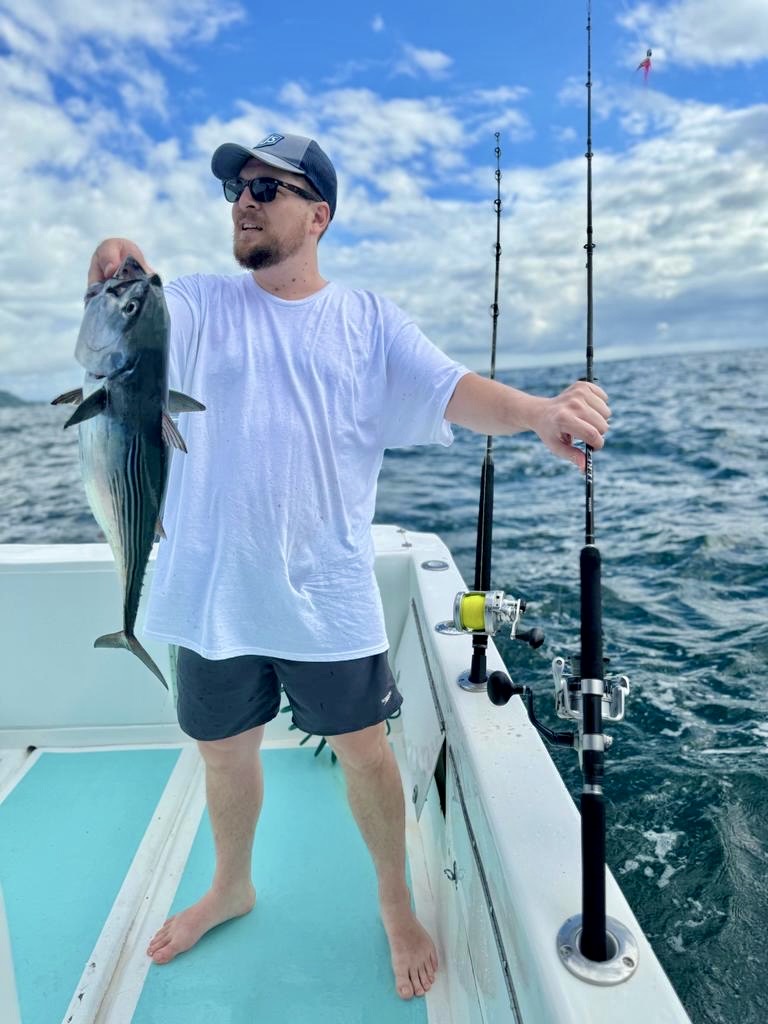
As a chef I work with fish and animal meat all the time, but there’s always a disconnection from the life it was, so this time I felt it was important to go through every step. I wanted to catch, kill, prepare, cook and serve this tuna and try to have a deeper understanding of the process. After a good ten minutes, I eventually pulled the (rather smaller than the battle promised) tuna aboard and this process of connecting with food and nature began. I’d heard this was one of the major factors that allow people in Blue Zones to live to over 100 years and I wanted to try to understand why.
LIVING THE PURA VIDA
On the western shores of Costa Rica, where the sun-kissed beaches meet the lush greenery of the jungle, sits the Nicoya Peninsula. Here, amidst dramatic landscapes and vibrant communities, the residents have unlocked the secret to a fulfilling and long life. One of only five Blue Zone destinations in the world and home to one of the largest populations of centenarians anywhere on the planet, could it hold the secret to human longevity?

The concept of Blue Zones was first coined by Dan Buettner, a National Geographic Fellow, New York Times best-selling author and host of the hit Netflix series “Live to 100: Secrets of the Blue Zones”. They are defined as specific regions in the world where people are living longer, healthier lives compared to the global average.
The other four are Okinawa in Japan, Sardinia in Italy, Ikaria in Greece and Loma Linda in California, and they all have common lifestyle characteristics and environmental factors that contribute to the well-being and longevity of their inhabitants.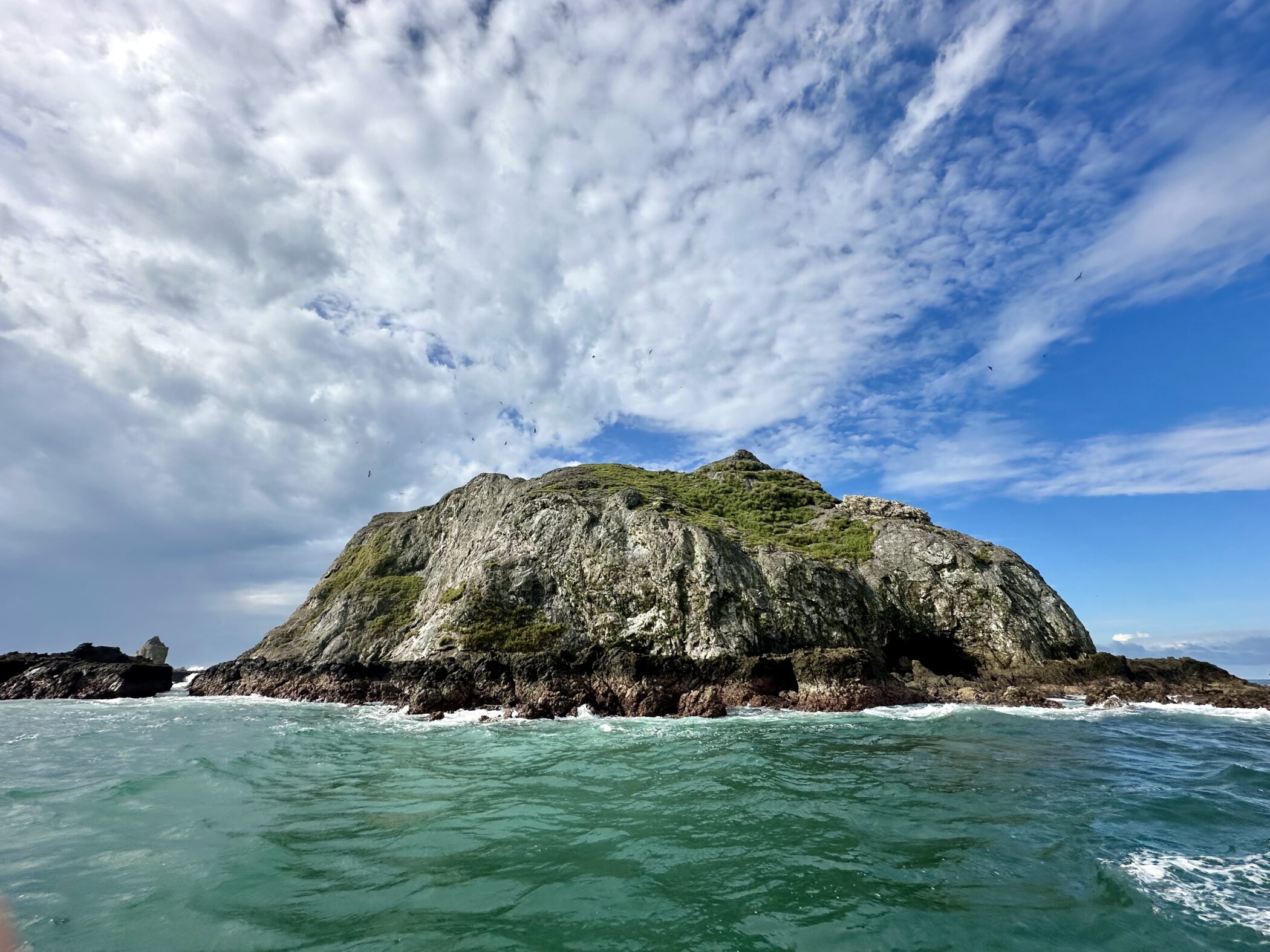 The Nicoya Peninsula has solidified itself as a quintessential Blue Zone, boasting a population that experiences lower rates of chronic diseases and an unusually high number of the population that lives into their 90s or even 100s. The phrase “Pura Vida” is used constantly in Costa Rica – it translates as “Pure Life” but encompasses so much more.
The Nicoya Peninsula has solidified itself as a quintessential Blue Zone, boasting a population that experiences lower rates of chronic diseases and an unusually high number of the population that lives into their 90s or even 100s. The phrase “Pura Vida” is used constantly in Costa Rica – it translates as “Pure Life” but encompasses so much more.
This Pura Vida lifestyle makes the destination perfect for what is now becoming known as Blue Zone Wellness tourism (a term that Globetrender coined a few years ago). From embracing a plant-centred diet rich in fruits, vegetables and beans, to building deep connections with the people and natural world around you, first-hand experience of life in a Blue Zone can have a transformative impact on you as a traveller.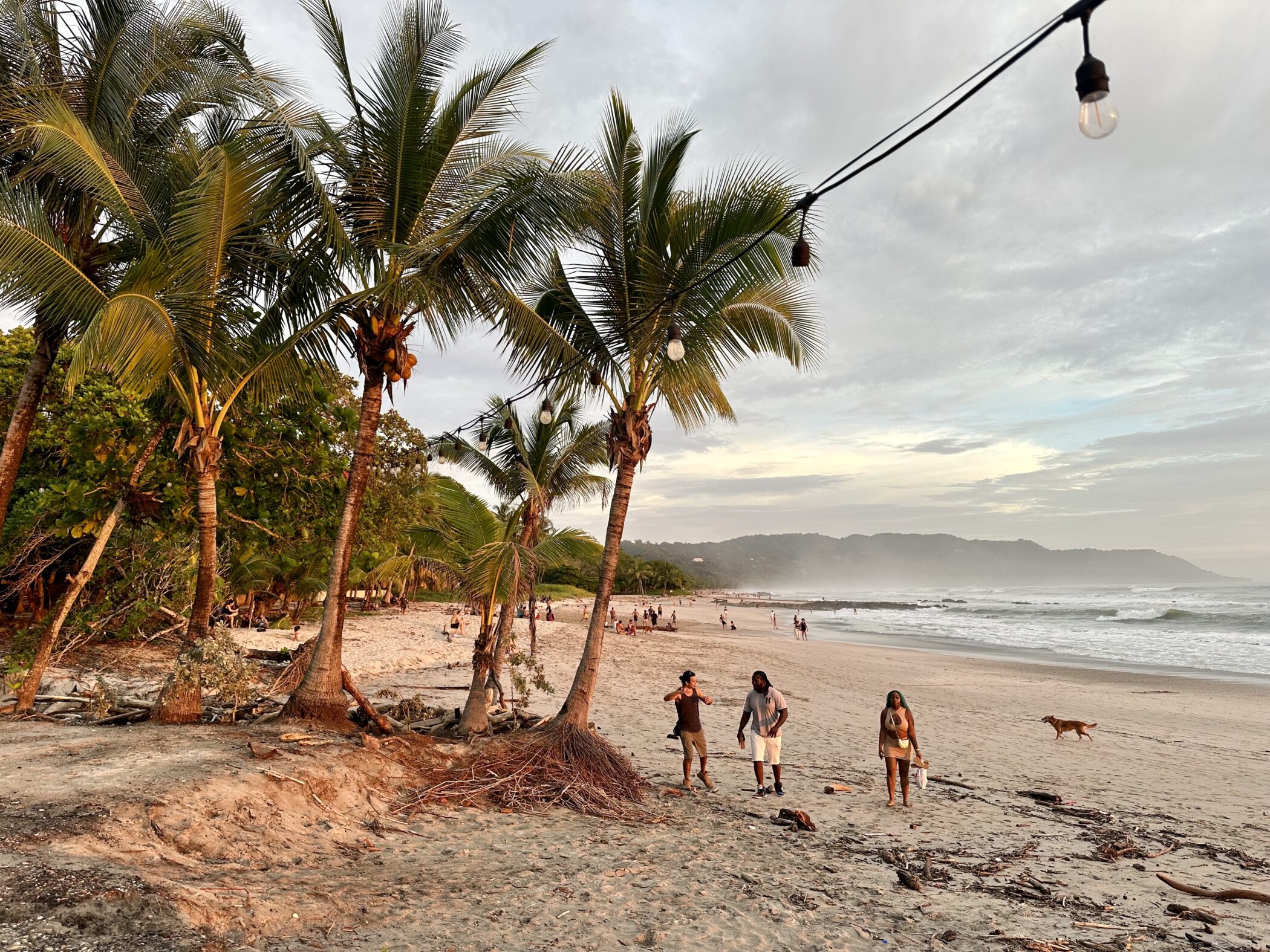 I am a 35-year-old chef and run my own restaurant in Brighton on the south coast of England. I also have a young child, which leaves little time for investing in my own wellbeing. If I am not in the kitchen or running the floor, my evenings are spent doing things which disconnect me from the stresses of life. Although I live by the sea, I rarely spend time on the beach or in nature, and I feel this could be something which is impacting me more now than I’d realised.
I am a 35-year-old chef and run my own restaurant in Brighton on the south coast of England. I also have a young child, which leaves little time for investing in my own wellbeing. If I am not in the kitchen or running the floor, my evenings are spent doing things which disconnect me from the stresses of life. Although I live by the sea, I rarely spend time on the beach or in nature, and I feel this could be something which is impacting me more now than I’d realised. Most days I eat quick and easy food, and although I have done stints in the gym, I find it hard to motivate myself to go recreationally, especially when I’m on my feet fifty hours a week. On the plus side I don’t smoke, am in good health and have had no serious illnesses. Having the experience of killing the tuna and cooking it in the kitchen of the hotel I was staying in made me think differently about my lifestyle and relationship with food, beyond it being a means to earning a living.
Most days I eat quick and easy food, and although I have done stints in the gym, I find it hard to motivate myself to go recreationally, especially when I’m on my feet fifty hours a week. On the plus side I don’t smoke, am in good health and have had no serious illnesses. Having the experience of killing the tuna and cooking it in the kitchen of the hotel I was staying in made me think differently about my lifestyle and relationship with food, beyond it being a means to earning a living.
To find out my expected lifespan based on how I am living now, I took the Blue Zones “True Vitality Test”, which quizzes you on your height, weight, ethnicity, age, home location, income, education, smoker status, history of chronic disease, mental health, sleep, exercise, diet, relationship status, happiness, satisfaction in work, time with friends and religious activity. It comes back with your life expectancy now, the years of healthy living you are expected to have (before cancer, diabetes or heart disease etc) and the years you could potentially live if you made changes. Needless to say, I had room for improvement (an additional 19 potential years worth.).
Buettner explains on the Blue Zones website that to make it to 100, you have to have “won the genetic lottery”. But he also says: “Most of us have the capacity to make it well into our early 90s and largely without chronic disease but the average person’s life expectancy could increase by ten to 12 years by adopting a Blue Zones lifestyle.”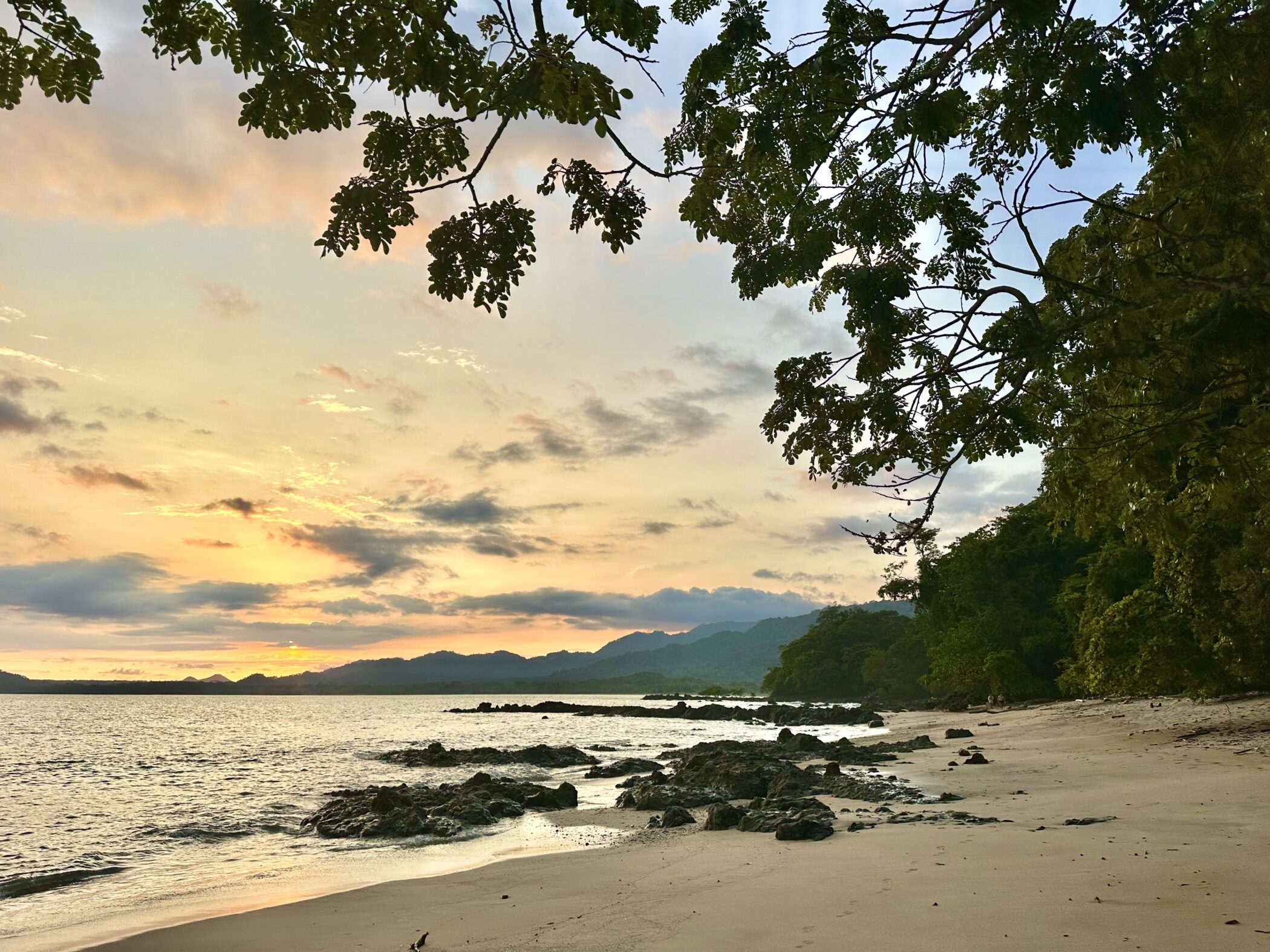
SANTA THERESA – HOTEL NANTIPA
In search of answers, I head to the tip of the peninsula, where the sleepy surf town of Santa Theresa sits. A dusty, rough-around-the-edges community that nestles on the idyllic shores of the Pacific Ocean, it’s a mash up of small hotels, bars and guest houses on a single potholed mud road, but it’s also home to one of Costa Rica’s most pioneering wellness resorts, Hotel Nantipa (Nanku suite from US$395 per night including breakfast).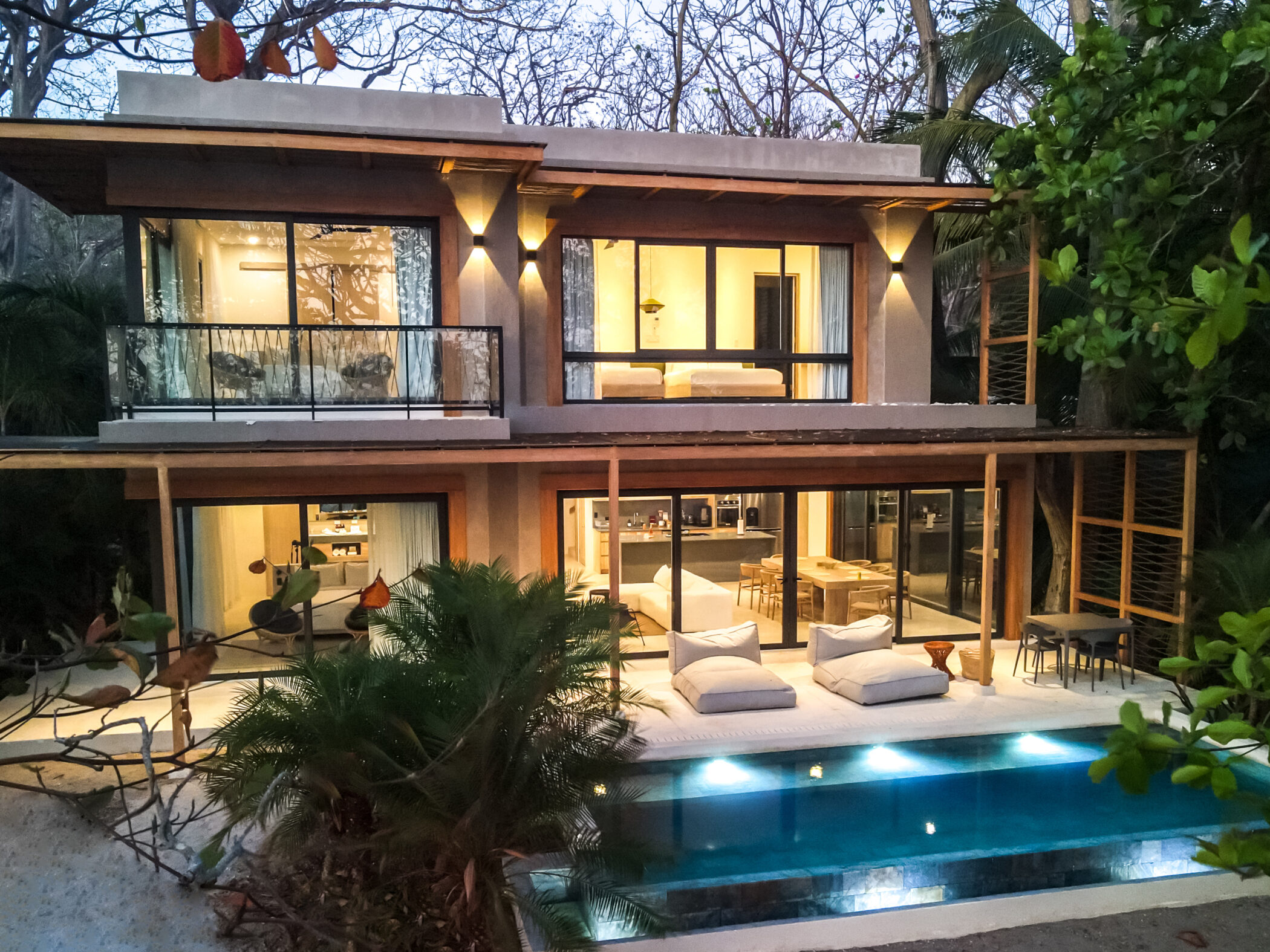
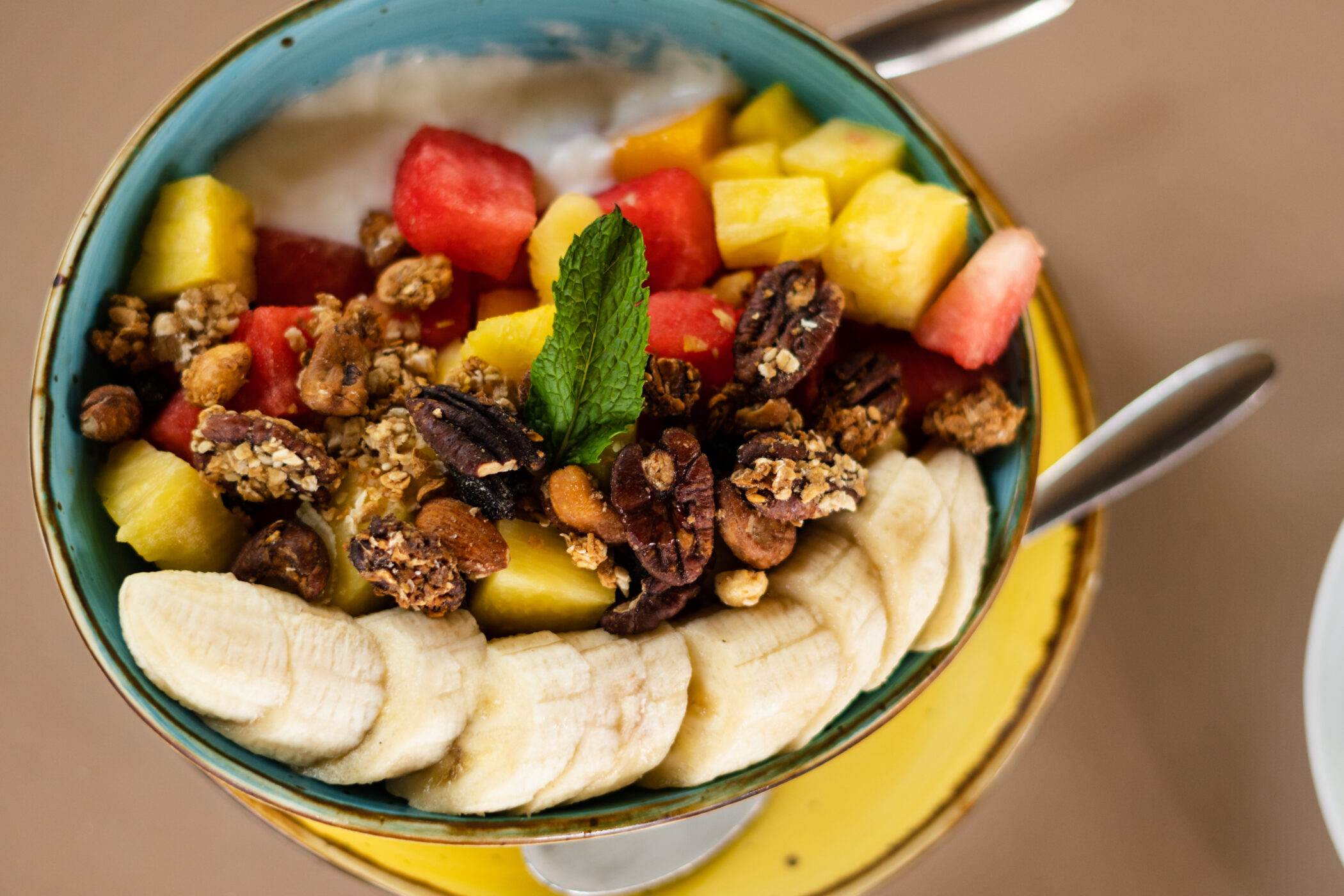 Constructed harmoniously amongst towering palms and dense foliage, the hotel’s suites, bungalows and three-bedroom villas merge beautifully with their organic surroundings. Nantipa has embraced the significance of the region’s Blue Zone status and created a new “Blue Wellness Experience” (Buettner has trademarked “Blue Zones”) designed to offer guests a glimpse into the way of life that fuels the vitality of the local community.
Constructed harmoniously amongst towering palms and dense foliage, the hotel’s suites, bungalows and three-bedroom villas merge beautifully with their organic surroundings. Nantipa has embraced the significance of the region’s Blue Zone status and created a new “Blue Wellness Experience” (Buettner has trademarked “Blue Zones”) designed to offer guests a glimpse into the way of life that fuels the vitality of the local community. 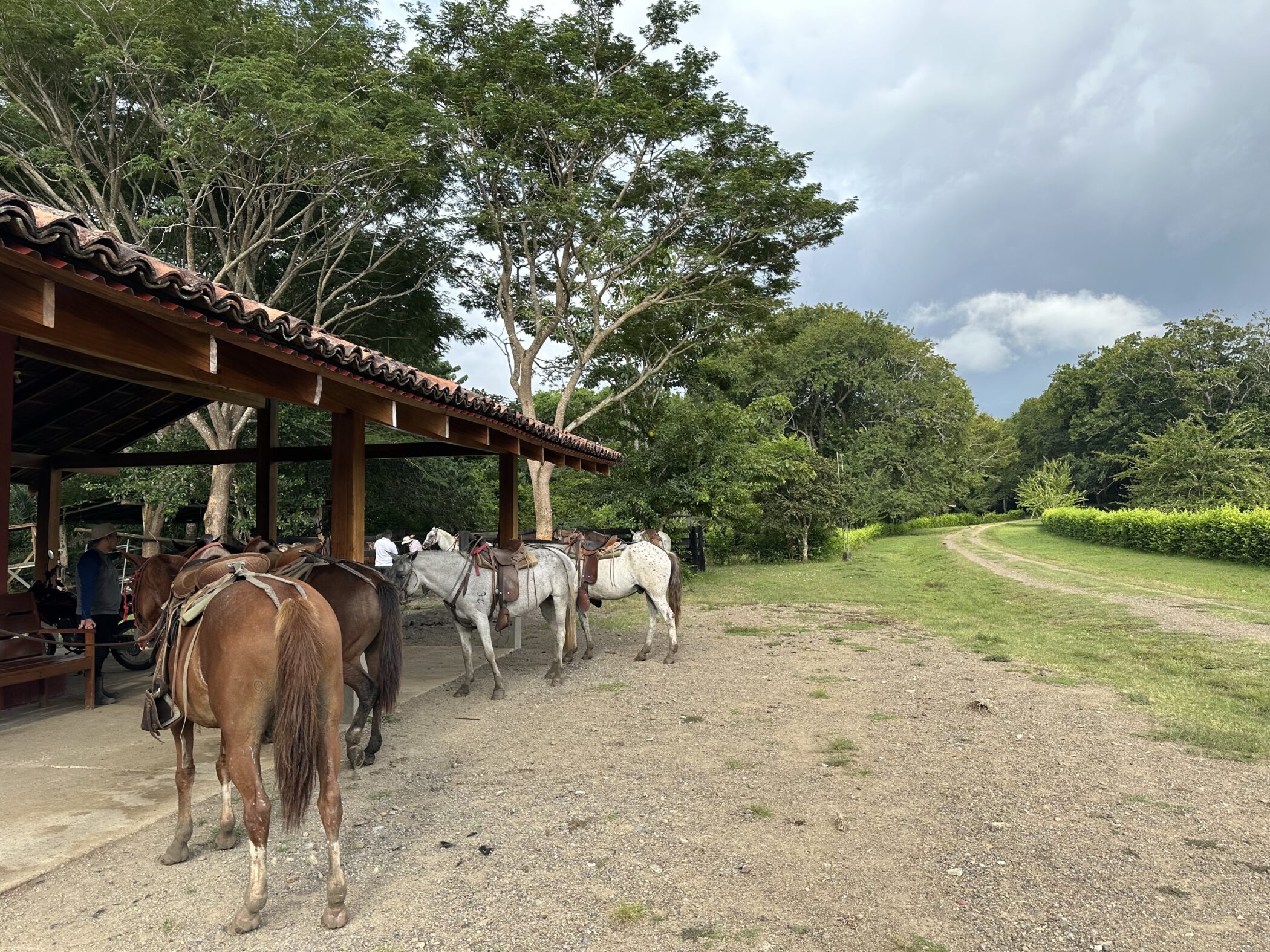
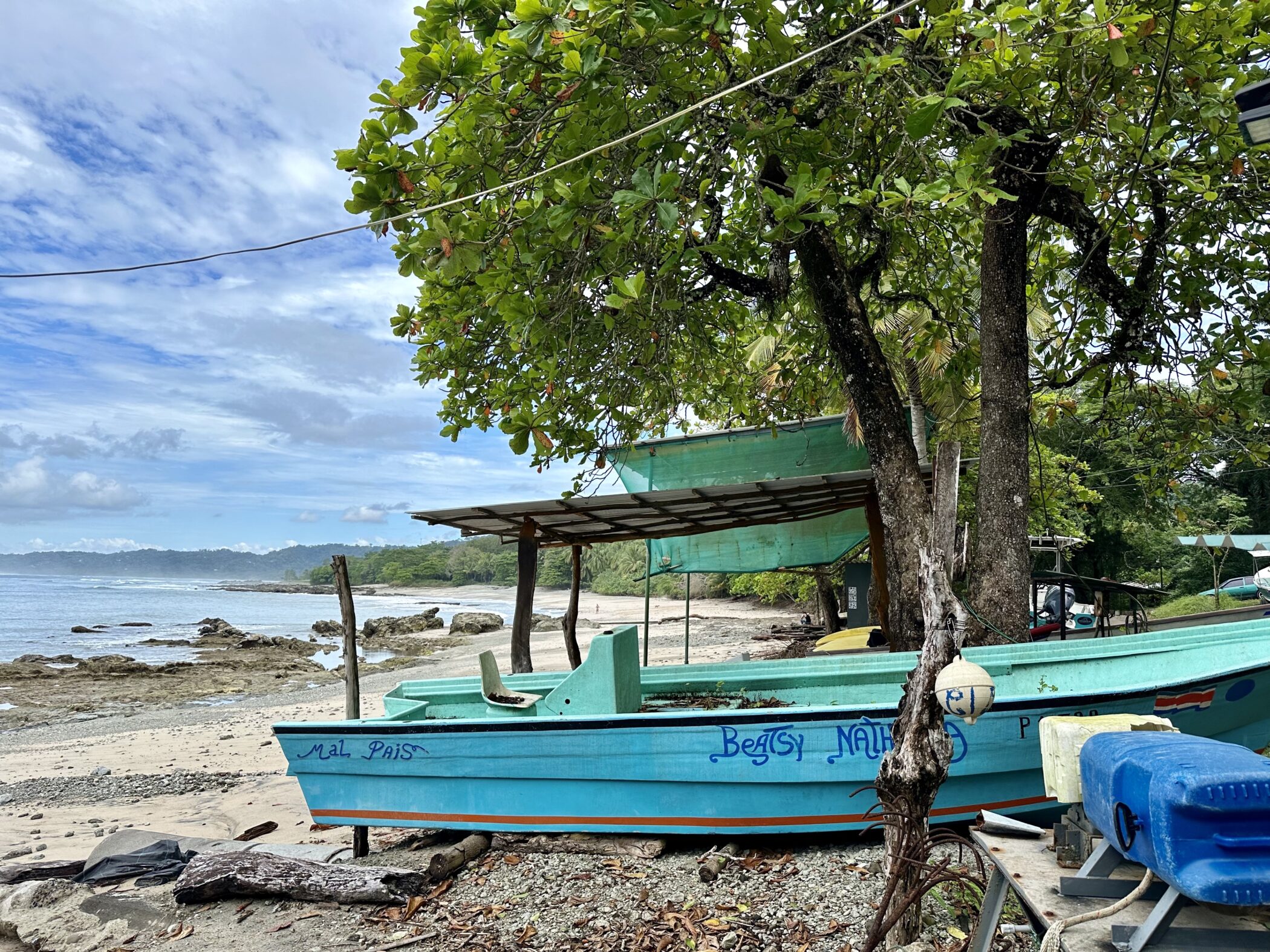 “Here in Nicoya we perhaps take our way of life for granted, but it’s something that’s often remarked upon by our guests,” says Harry Hartman, general manager and owner of Nantipa. “We’re an outdoor culture, we enjoy being with people, taking our time, and eating what grows naturally around us – pura vida! If we can piece together these seemingly simple elements to encourage people to live healthier, more mindful lives when they get home from a stay at Nantipa, then we become more than just a happy memory – we become a long-term lifestyle that expands beyond our Blue Zone.”
“Here in Nicoya we perhaps take our way of life for granted, but it’s something that’s often remarked upon by our guests,” says Harry Hartman, general manager and owner of Nantipa. “We’re an outdoor culture, we enjoy being with people, taking our time, and eating what grows naturally around us – pura vida! If we can piece together these seemingly simple elements to encourage people to live healthier, more mindful lives when they get home from a stay at Nantipa, then we become more than just a happy memory – we become a long-term lifestyle that expands beyond our Blue Zone.”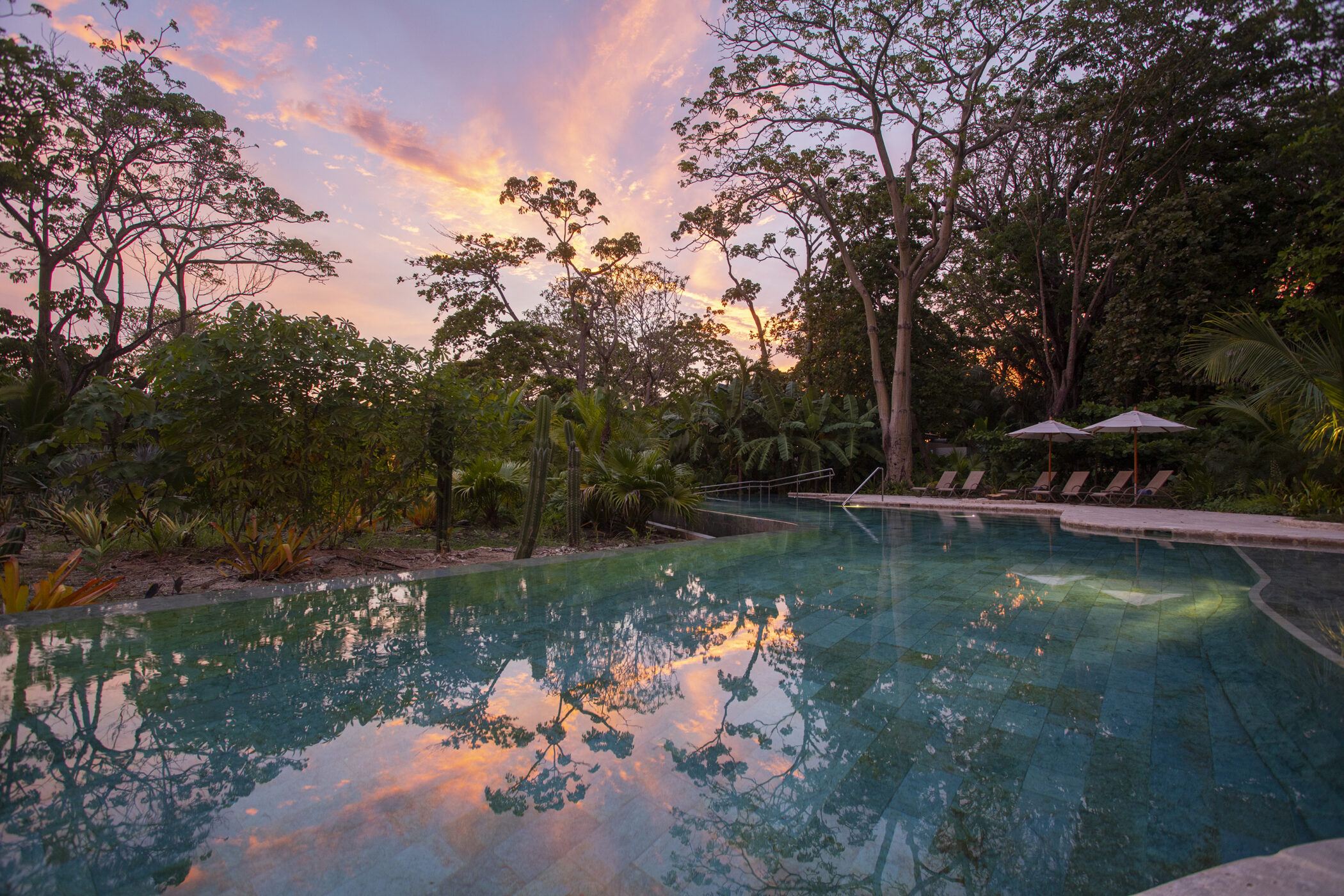 Central to the programme is the idea of “intentional living” or “Plan de Vida”. Activities include stress management through meditation and yoga (the hotel has a stunning new yoga shala amongst the trees); journalling and planning your time from the luxury of your own private pool to create “positive purpose”; forest hiking to the incredible Montezuma Falls; swimming at night in a firework display of bioluminescence; and surfing in the azure Pacific ocean to connect with the water.
Central to the programme is the idea of “intentional living” or “Plan de Vida”. Activities include stress management through meditation and yoga (the hotel has a stunning new yoga shala amongst the trees); journalling and planning your time from the luxury of your own private pool to create “positive purpose”; forest hiking to the incredible Montezuma Falls; swimming at night in a firework display of bioluminescence; and surfing in the azure Pacific ocean to connect with the water.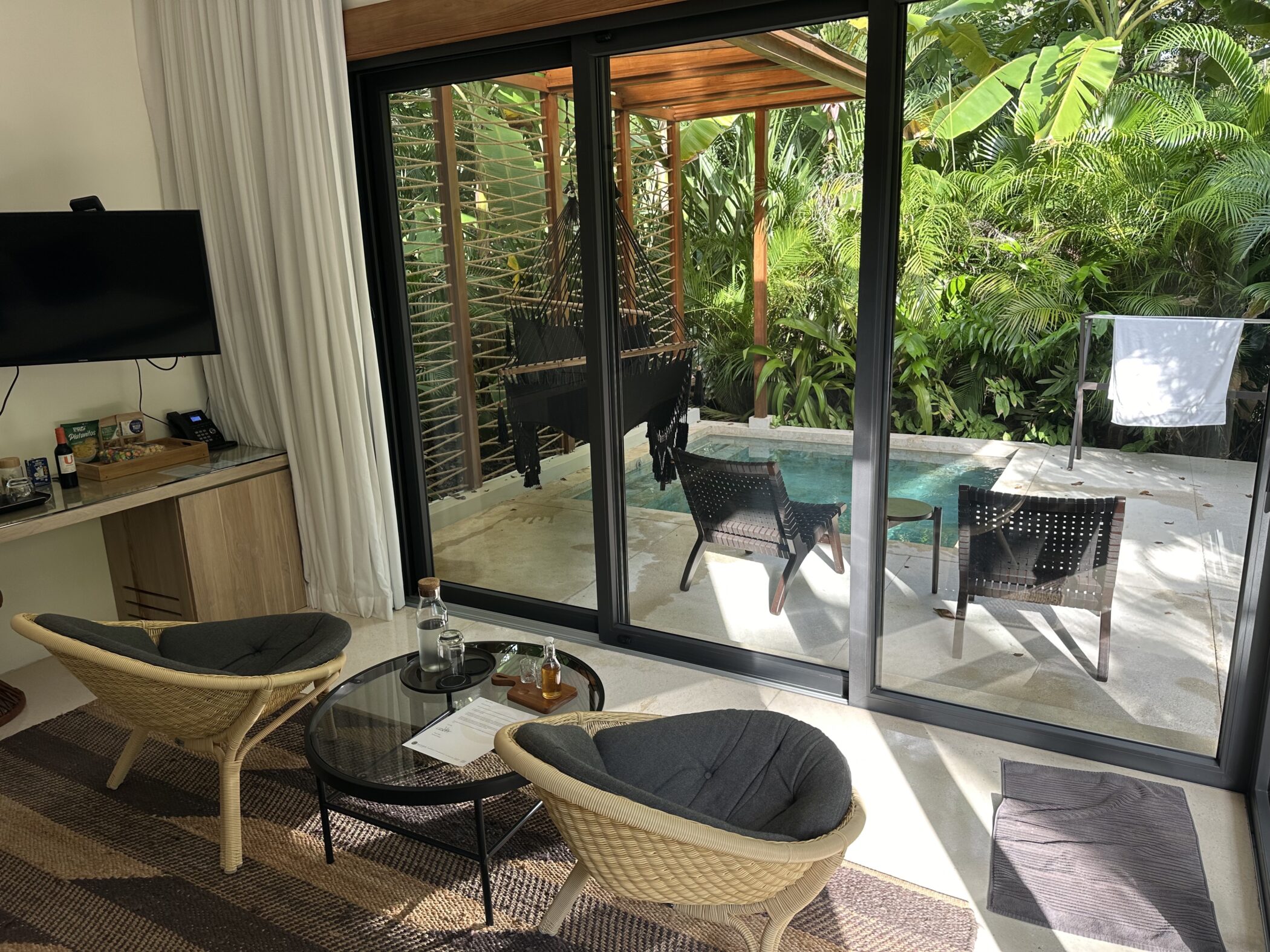
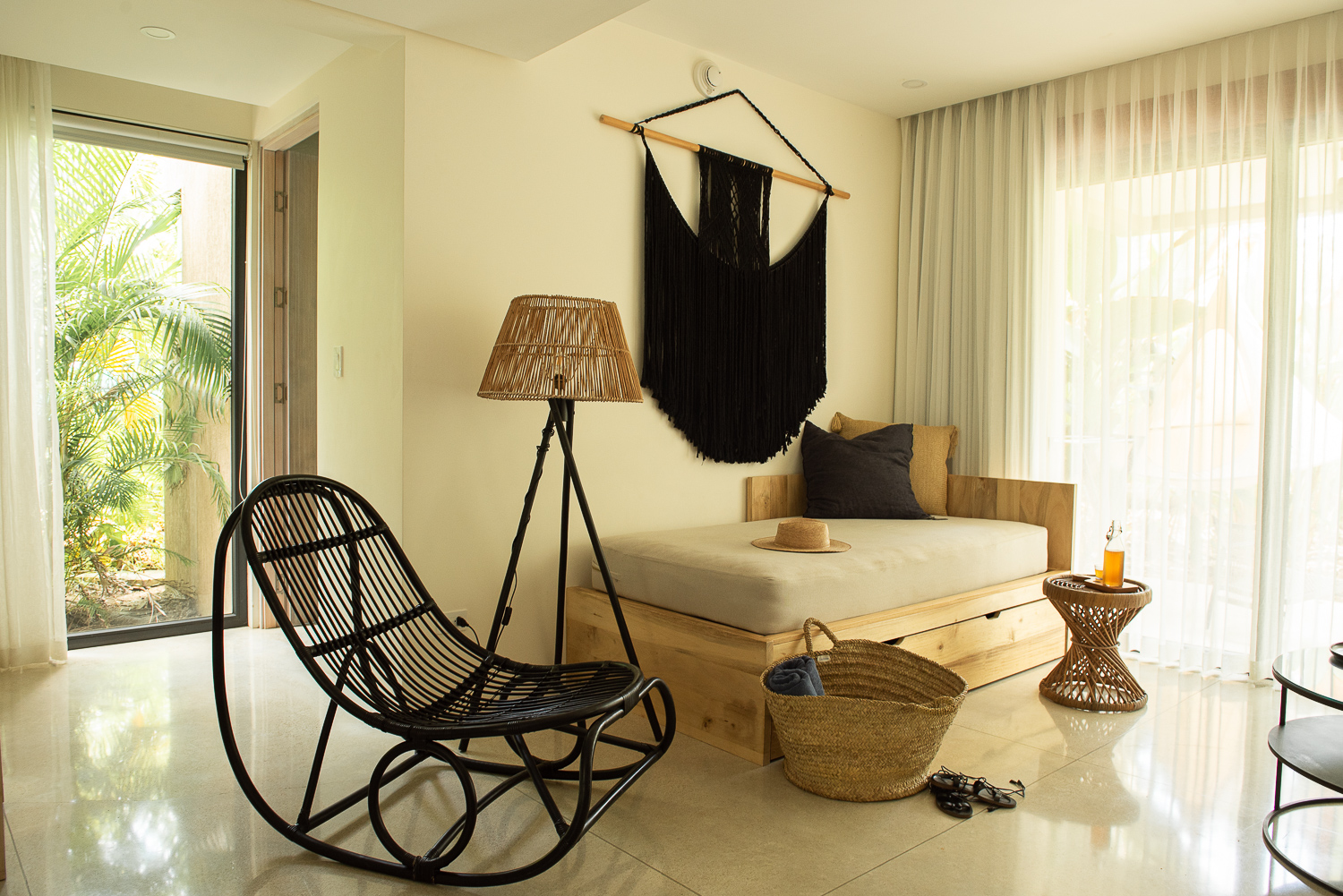 Among the nine everyday lifestyle traits that are common to people living in Blue Zones is “Wine at 5”. Interestingly, it’s been found that people in every Blue Zone (except Loma Linda, which is populated by Seventh Day Adventists) drink alcohol moderately and regularly. What’s more, moderate drinkers outlive non-drinkers. The secret is to drink one or two glasses per day with friends and/or food. With this in mind, a beach front cocktail at sunset is essential. At Nantipa, the idea is to mirror the rhythm and outdoor lifestyle that is synonymous with the Nicoyan people. And it does this very well.
Among the nine everyday lifestyle traits that are common to people living in Blue Zones is “Wine at 5”. Interestingly, it’s been found that people in every Blue Zone (except Loma Linda, which is populated by Seventh Day Adventists) drink alcohol moderately and regularly. What’s more, moderate drinkers outlive non-drinkers. The secret is to drink one or two glasses per day with friends and/or food. With this in mind, a beach front cocktail at sunset is essential. At Nantipa, the idea is to mirror the rhythm and outdoor lifestyle that is synonymous with the Nicoyan people. And it does this very well. Food is critical to good living in Nicoya. Manzú, the hotel’s beachside restaurant, serves up fresh, local cuisine that at every turn bursts with flavour and ingenuity. Everything is fresh, locally sourced where possible and often coming straight from the ocean or ground within mere miles. From the traditional breakfast of gallo pinto (rice and beans) and fresh fruits, to the incredible ceviches and fragrant tacos, the food is never heavy or dull, but feels energising and wholly satisfying.
Food is critical to good living in Nicoya. Manzú, the hotel’s beachside restaurant, serves up fresh, local cuisine that at every turn bursts with flavour and ingenuity. Everything is fresh, locally sourced where possible and often coming straight from the ocean or ground within mere miles. From the traditional breakfast of gallo pinto (rice and beans) and fresh fruits, to the incredible ceviches and fragrant tacos, the food is never heavy or dull, but feels energising and wholly satisfying.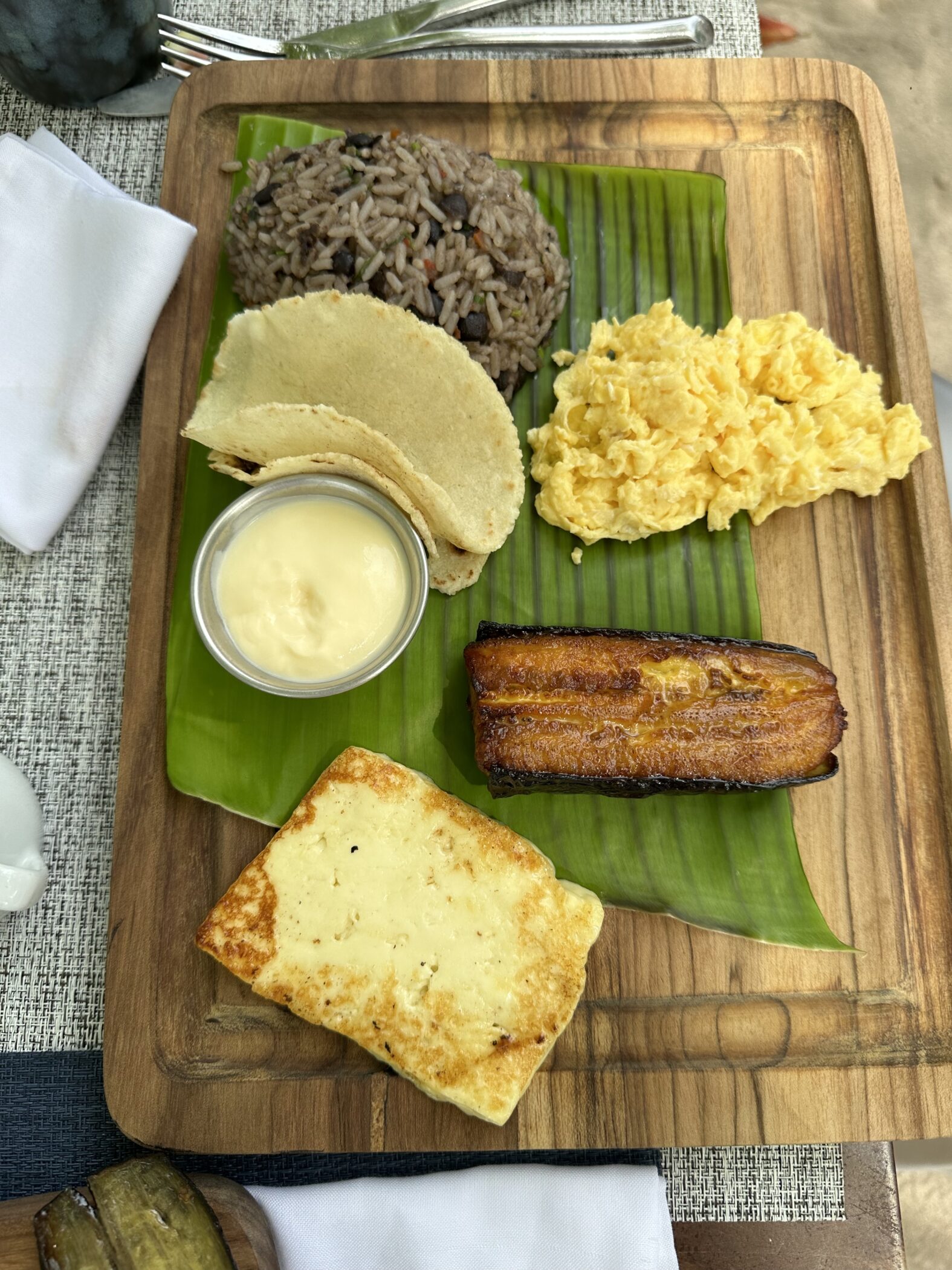 If you’re of a more adventurous disposition you can arrange fishing trips to catch local tuna yourself (like I did) and have the kitchen prepare it for your evening meal – yet another example of how a connection to life, and in this case your food, is demonstrated everyday at Nantipa. In my case I went through the whole process and I found it actually one of the most special events of my time there.
If you’re of a more adventurous disposition you can arrange fishing trips to catch local tuna yourself (like I did) and have the kitchen prepare it for your evening meal – yet another example of how a connection to life, and in this case your food, is demonstrated everyday at Nantipa. In my case I went through the whole process and I found it actually one of the most special events of my time there.
The creation of the Blue Experience at Nantipa is a testament to a growing trend recognised by Globetrender. Founder Jenny Southan says “It’s great to see Hotel Nantipa recognising the natural assets it has all around it as one of the world’s five Blue Zones. Coming up with a programme like this puts it ahead of the curve, and I expect to see other properties following suit.”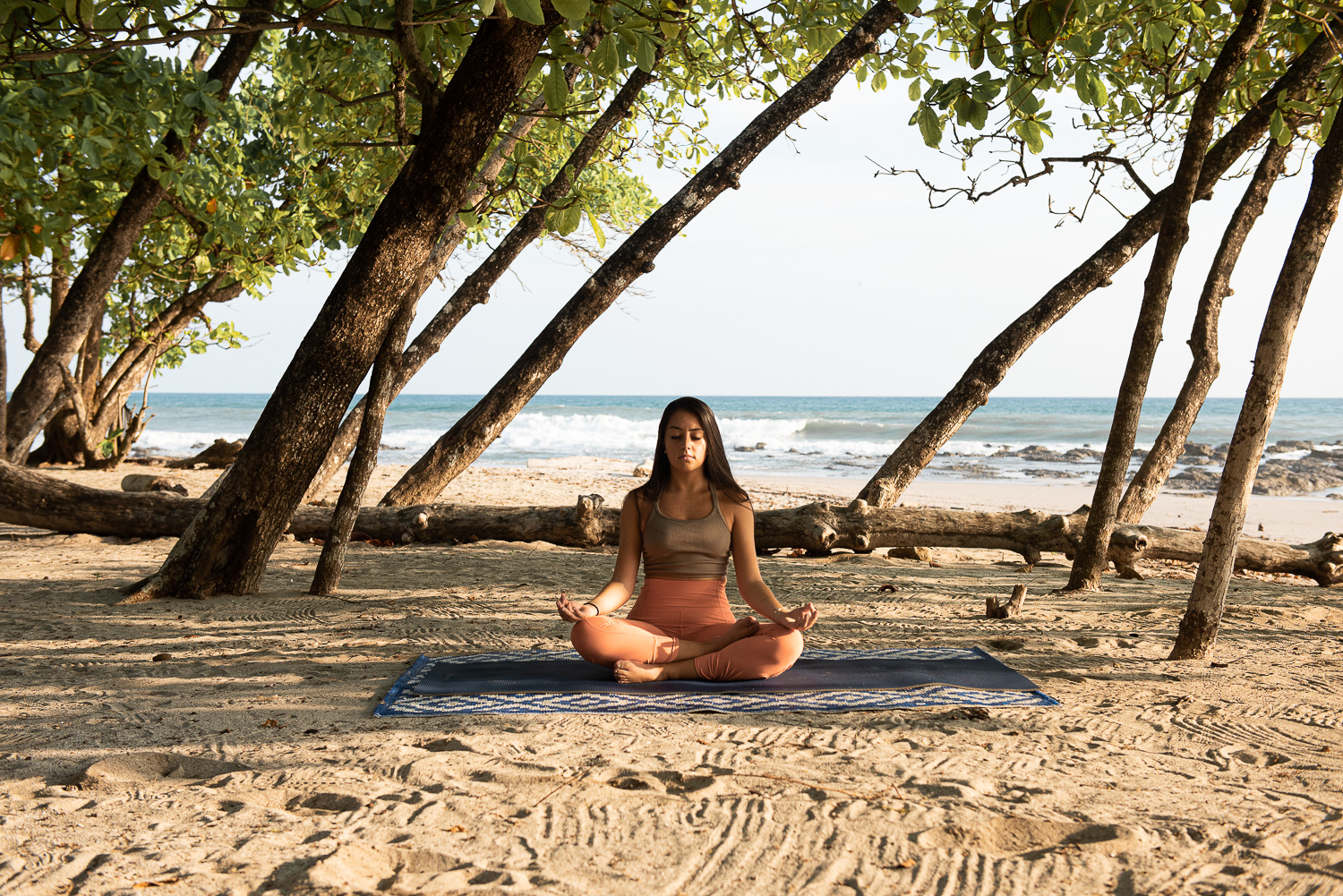 As the world seeks not just a vacation but a transformative journey toward health and mindfulness, Nantipa’s Blue Zone Wellness Experience emerges as a pioneer in the realm of wellness tourism. Tailormade to guest preferences, the package invites travellers to not only witness the beauty of the Nicoya Peninsula but to embody its spirit – one of vitality, purpose and enduring wellbeing.
As the world seeks not just a vacation but a transformative journey toward health and mindfulness, Nantipa’s Blue Zone Wellness Experience emerges as a pioneer in the realm of wellness tourism. Tailormade to guest preferences, the package invites travellers to not only witness the beauty of the Nicoya Peninsula but to embody its spirit – one of vitality, purpose and enduring wellbeing.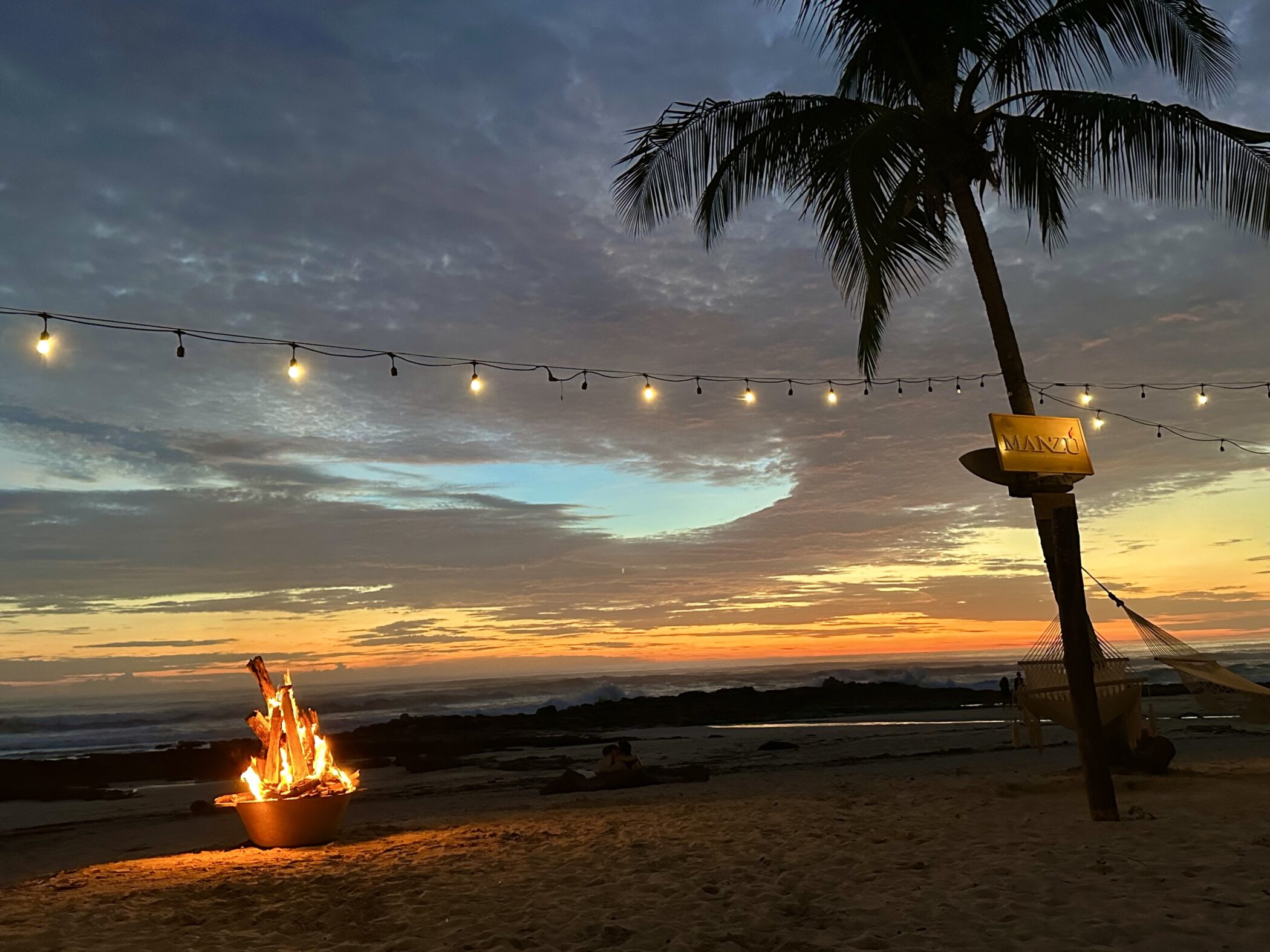
INTERIOR RAINFOREST – TABACON
If Nantipa delivers wellness of the mind, then its (older) sister hotel Tabacón is very much about wellness of the body. A five-hour drive inland, deep in the Costa Rican rainforest, the Tabacón Thermal Resort and Spa (Orchid room from US$450 per night including breakfast) is an institution in the world of spa retreats, a 900-acre property which opened in 1990, putting the town of La Fortuna on the international wellness map.
Seamlessly blending luxury with the raw beauty of its surroundings, the hotel nestles amongst the trees in the shadow of iconic volcano, Arenal. The abundance of tropical flora and fauna is striking at every turn – brilliant pink orchids, magnificent yellow-beaked toucans, sleepy sloths, dense vine-strung forest and the ever-present steam rising from what makes this place so unique: its geothermal hot springs.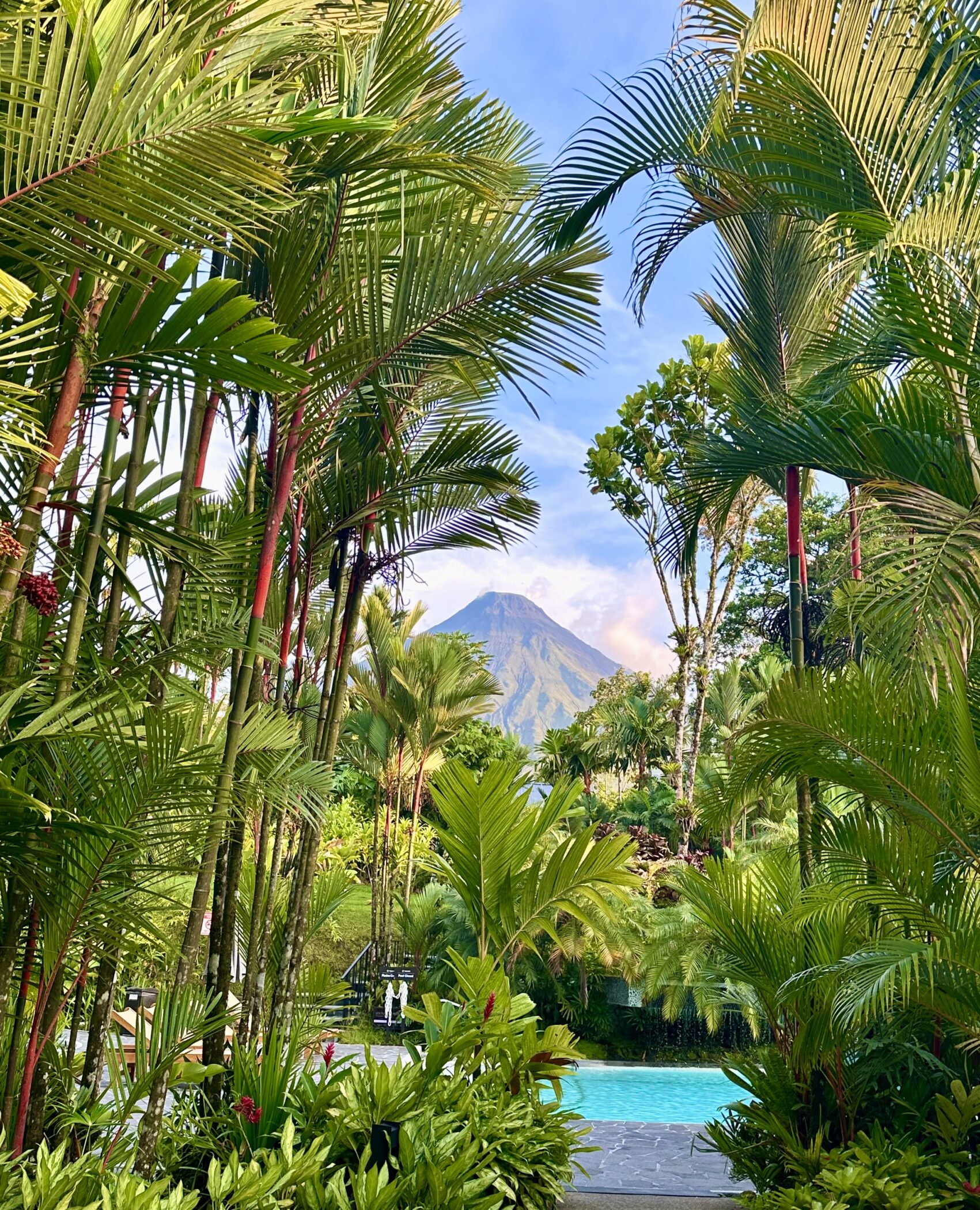 Every room (105 in total), its facilities and private pools are all heated by these natural springs, but that’s not why people come. The Grand Spa at Tabacon offers a thermal experience like very few places on Earth. Cascading torrents of nutrient rich, steaming thermal water wind their way down though dense rainforest. Tumbling across rock and black sand, under bridges and tree limbs. The heady scent of steam and forest mixes with the gurgle of water and the sounds of nature surrounding it, to create a mesmerising experience of relaxation.
Every room (105 in total), its facilities and private pools are all heated by these natural springs, but that’s not why people come. The Grand Spa at Tabacon offers a thermal experience like very few places on Earth. Cascading torrents of nutrient rich, steaming thermal water wind their way down though dense rainforest. Tumbling across rock and black sand, under bridges and tree limbs. The heady scent of steam and forest mixes with the gurgle of water and the sounds of nature surrounding it, to create a mesmerising experience of relaxation.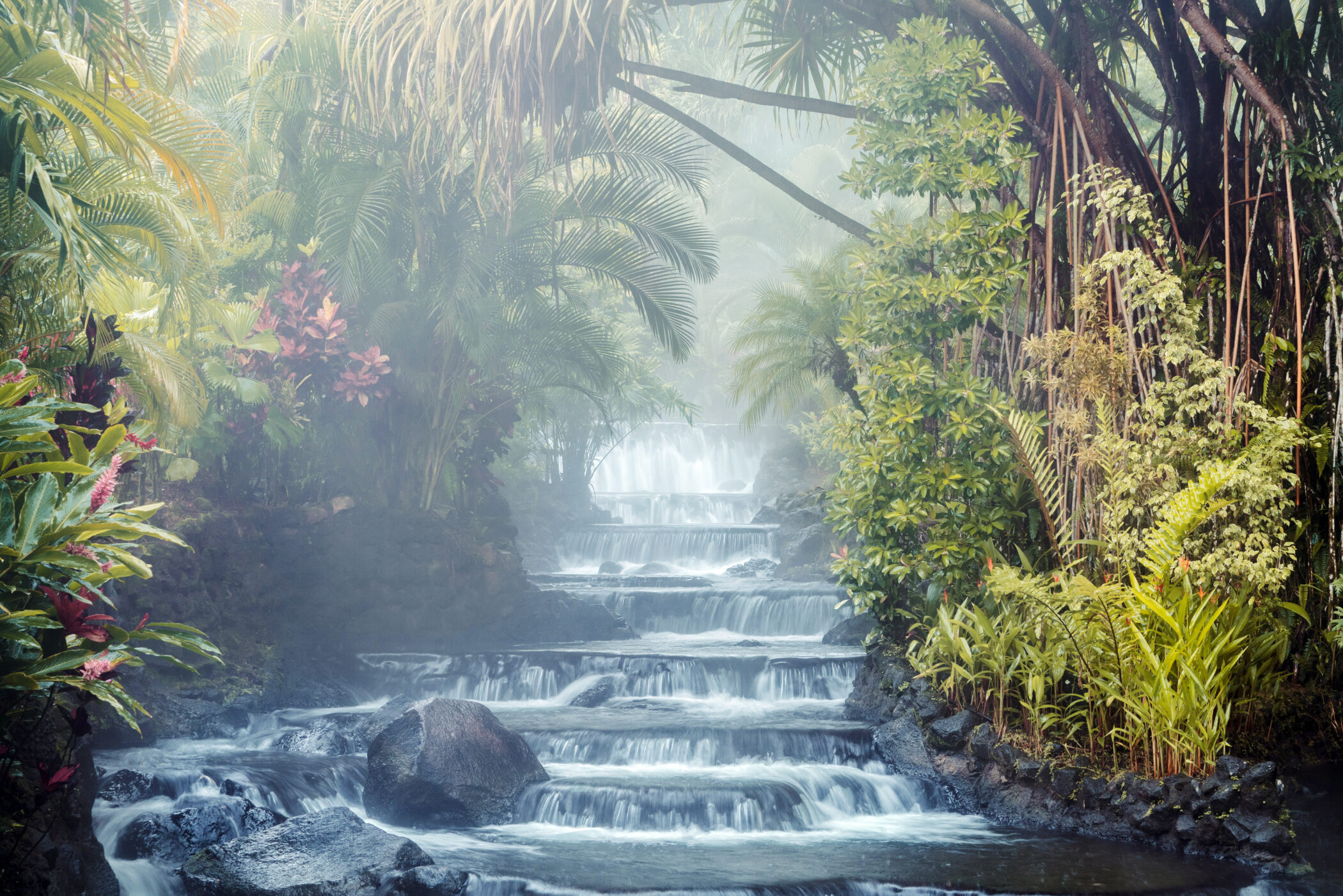
 Although the pools are largely manmade, the whole spa feels organic and at one with its surroundings. It’s the manifestation of the vision that its founder, Jaime Mikowski, had for the property and what the site could give to both visitors and locals. It’s a great example of the careful symbiosis of human life and nature, which make these Blue Zones so special.
Although the pools are largely manmade, the whole spa feels organic and at one with its surroundings. It’s the manifestation of the vision that its founder, Jaime Mikowski, had for the property and what the site could give to both visitors and locals. It’s a great example of the careful symbiosis of human life and nature, which make these Blue Zones so special.
The spa, which is open to guests only (non-guests are able to purchase day tickets to the springs) also has a list of therapies, yoga classes, massages and treatments. All designed to immerse and connect your body and mind to your surroundings, most treatments take place in the open air surrounded by the jungle.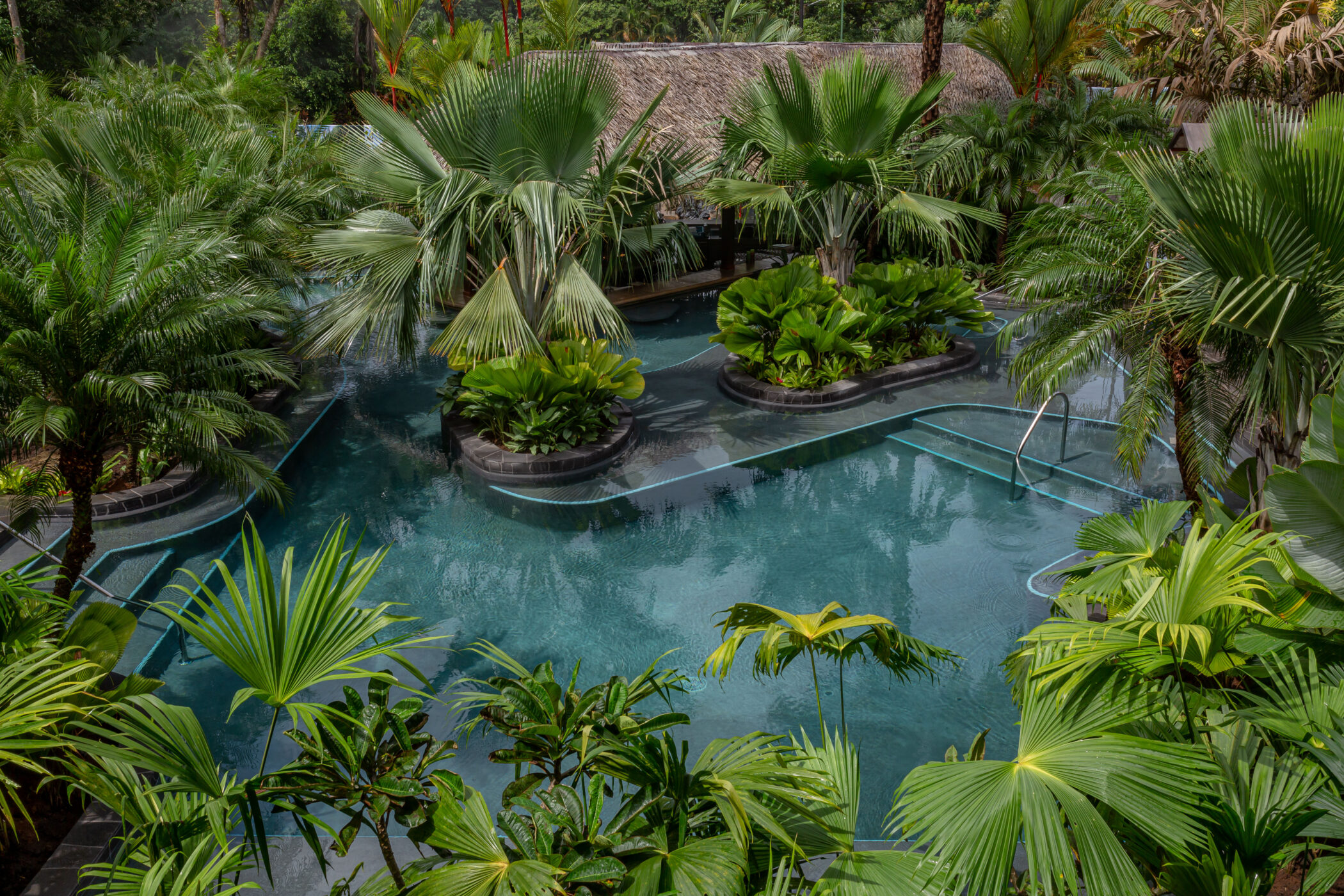
 From this location many people travel to the surrounding area to take part in waterfall repelling, canyoning, canopy tours and wildlife trips. Everything is designed to help you appreciate the outdoors and how it makes you feel. “No one thing explains longevity in the Blue Zones. It’s really an interconnected web of factors – including what we eat, our social network, daily rituals, physical environment, and sense of purpose – that propels us forward and gives life meaning,” says Dan Buettner in his best-selling book The Blue Zone Solution.
From this location many people travel to the surrounding area to take part in waterfall repelling, canyoning, canopy tours and wildlife trips. Everything is designed to help you appreciate the outdoors and how it makes you feel. “No one thing explains longevity in the Blue Zones. It’s really an interconnected web of factors – including what we eat, our social network, daily rituals, physical environment, and sense of purpose – that propels us forward and gives life meaning,” says Dan Buettner in his best-selling book The Blue Zone Solution. 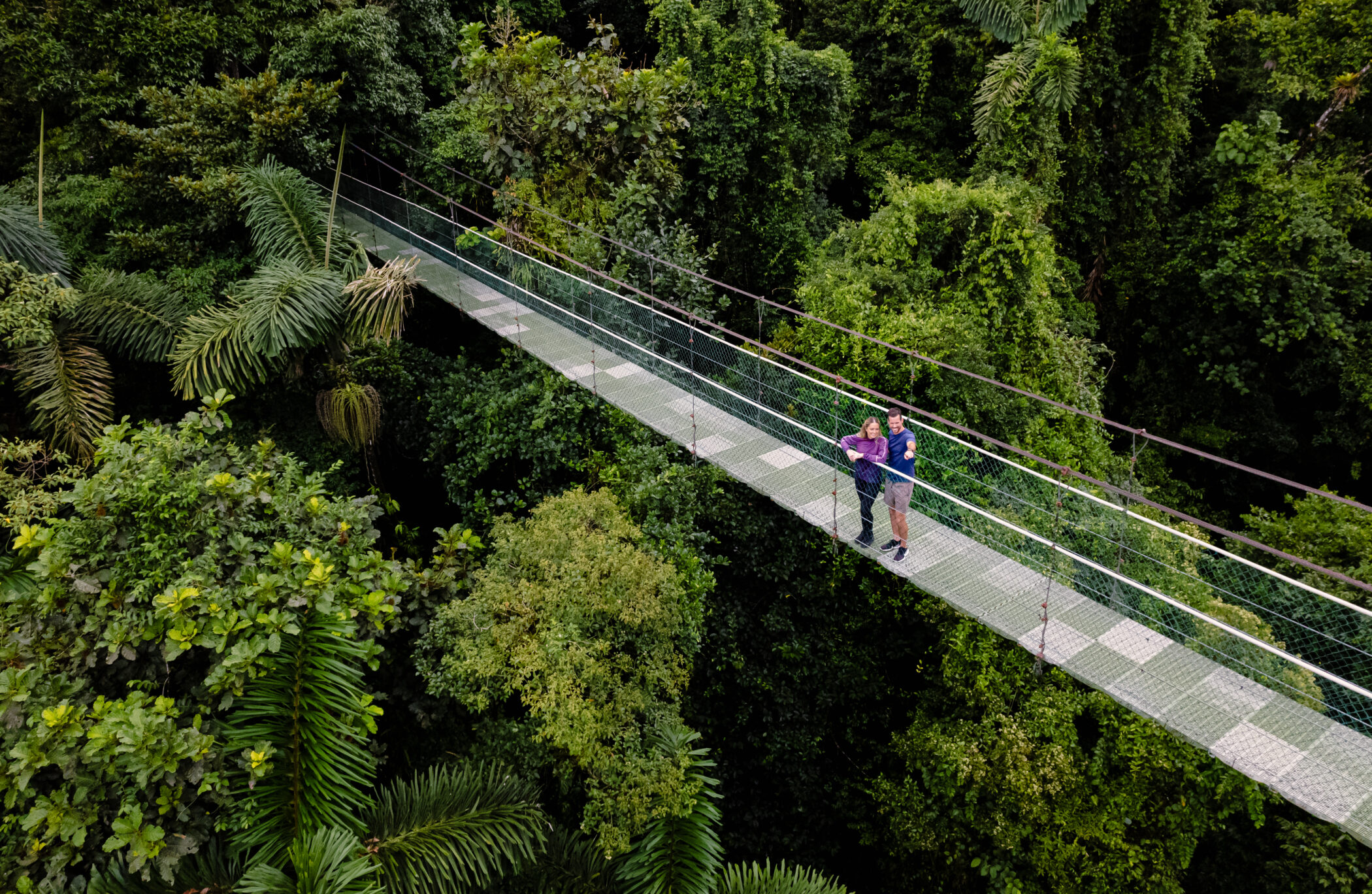 These factors are so present in Nicoya it’s noticeable at ever turn once you start looking. Nantipa and Tabacón combine it all into one manageable space and make it accessible to everyone in a snap shot experience, but it’s an experience many will decide to take home and expand upon. The future of our society may one day depend on it. Maybe technology isn’t the future of extended life – it’s fishing with friends?
These factors are so present in Nicoya it’s noticeable at ever turn once you start looking. Nantipa and Tabacón combine it all into one manageable space and make it accessible to everyone in a snap shot experience, but it’s an experience many will decide to take home and expand upon. The future of our society may one day depend on it. Maybe technology isn’t the future of extended life – it’s fishing with friends?
